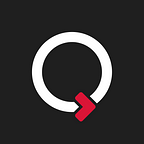Connected devices allow us today to monitor our daily habits or our health, to manage energy consumption and track almost any type of data
These devices constitute what we call the Internet of Things — a network of objects connected via networks, which can interact with each other and with us.
According to the latest Verizon report on the state of the Internet of Things (IoT), 73% of companies are evaluating the use of IoT systems or already applying them as drivers for the Digital Transformation process.
IoT as an innovative digital solution has great potential in terms of growth and efficiency across different sectors and allows the optimization of decision-making processes, reshaping business models and increasing revenue streams.
In fact, as Mark Bartolomeo, Verizon’s VP of IoT Connected Solutions, says: “In 2017, technological and regulatory progress, together with changes in consumer behaviour and cost lowering, have brought IoT closer to companies, and this is only the tip of the iceberg, if we talk about the budgets that this market can exercise”.
To better understand the impact of connected devices on the market, future perspectives and opportunities in different areas, it is sufficient to analyse the numbers and insights that emerged from the latest reports by Gartner, IHS Markit and NCTA.
IoT: market numbers for connected devices according to Gartner
2017 is an important year for the IoT market which, according to Gartner estimates, is experiencing a year-on-year increase of more than 31% with respect to the number of devices and connected units, going from 6.3 billion connected objects in 2016 to 8.4 billion expected for 2017.
In its growth forecasts, Gartner considers IoT an exponential technology and estimates that in the next three years it will reach 20.4 billion units with turnover in 2020 reaching 3 trillion dollars.
Leading the growth of the connected devices market are three geographical areas made up of China, North America and Western Europe, which alone account for 67% of the entire installed base of connected objects in 2017.
It is worth noting however that, from an application point of view, the consumer market is the driving force (63% of IoT applications in 2017 are of a consumer nature) with 5.2 billion connected objects, among which SmartTVs and wearable devices stand out. Next to these, sensors are beginning to make headway, combined with everyday objects such as appliances or connected cars.
The growth of this market also affects the business world: Gartner estimates that by 2020 IoT cross-industry devices will reach 4.4 billion units, which will be added to the 3.4 billion connected objects in vertical sectors such as the field of medicine or professional sport.
To better understand the global impact of this phenomenon, one just needs to look at the economic figures. This year alone, IoT has generated:
● 725 billion dollars in the consumer market;
● 963 billion dollars in the B2B sector, of which 280 billion in the cross-industry business segment and 683 billion dollars in global turnover deriving from specific vertical applications.
IoT: with smartphones, tablets and PCs, the number of connected objects will reach over 50 billion units by 2020
According to IHS Markit analysts, in reality the numbers pertaining to the IoT market are destined to grow more: according to estimates, the number of connected objects will reach over 50 billion units by 2020. This also considers, unlike Gartner, smartphones, tablets and computers.
As is clear from the analysis by IHS Markit, when including this type of device and related applications and services related to the IoT segment, the number of connected objects in 2017 rises to 27 billion. This is an exponential growth that could bring the number of these connected objects and devices to 125 billion by 2030.
IoT: innovation comes about through a focus on data
Beyond the types of connected objects that were chosen to be included in the calculation, what emerges with strong evidence from the numbers and the forecasts is that IoT is not a simple technological trend but a movement born from the introduction and evolution of mobile, which has profoundly transformed human-machine interaction.
The IoT market is experiencing a boom period not only thanks to the explosion of intelligent and connected objects but also new possibilities that, however, many companies still struggle to identify.
If on the one hand connected objects represent an intrinsic value for many business areas, on the other there are still many companies that fail to establish an appropriate strategy, consistent with their business model but above all in line with the company’s strategic objectives.
IoT is first and foremost a new great opportunity arising from the evolution of Internet use: a network that no longer only includes people and companies but also objects.
These objects are defined as “intelligent” because thanks to the web they produce and transmit data and information to other connected objects, to people and companies in an increasingly autonomous way and in a very short time.
Seen from this perspective, it is clear that the true value lies precisely in the data and information they contain, which become the lifeblood for much leaner and faster decision-making processes but also containers for a wider know-how through which to undertake innovation offering high possibilities of success.
Suggested reading: Adrian McEwen “Designing the Internet of Things”
